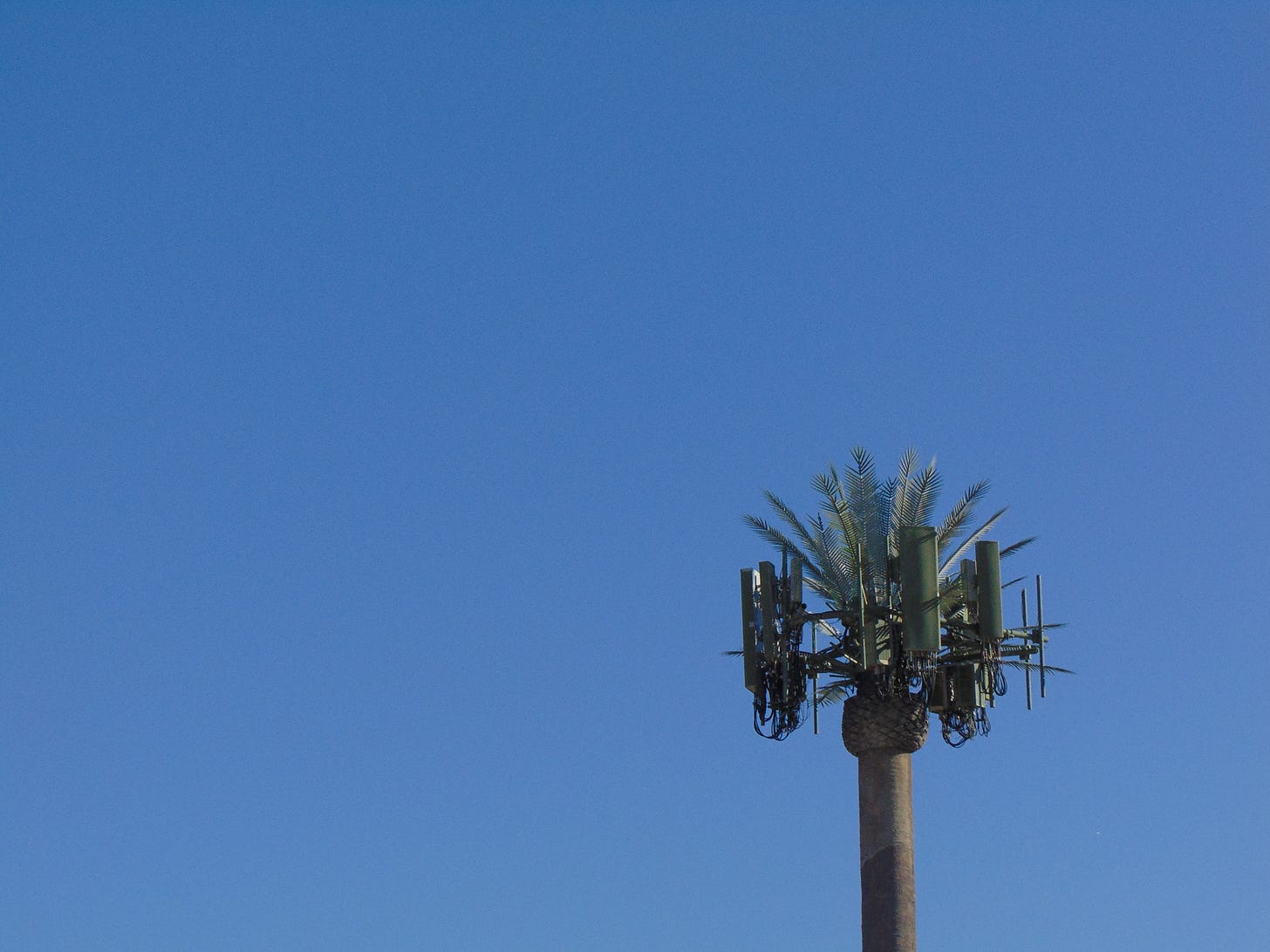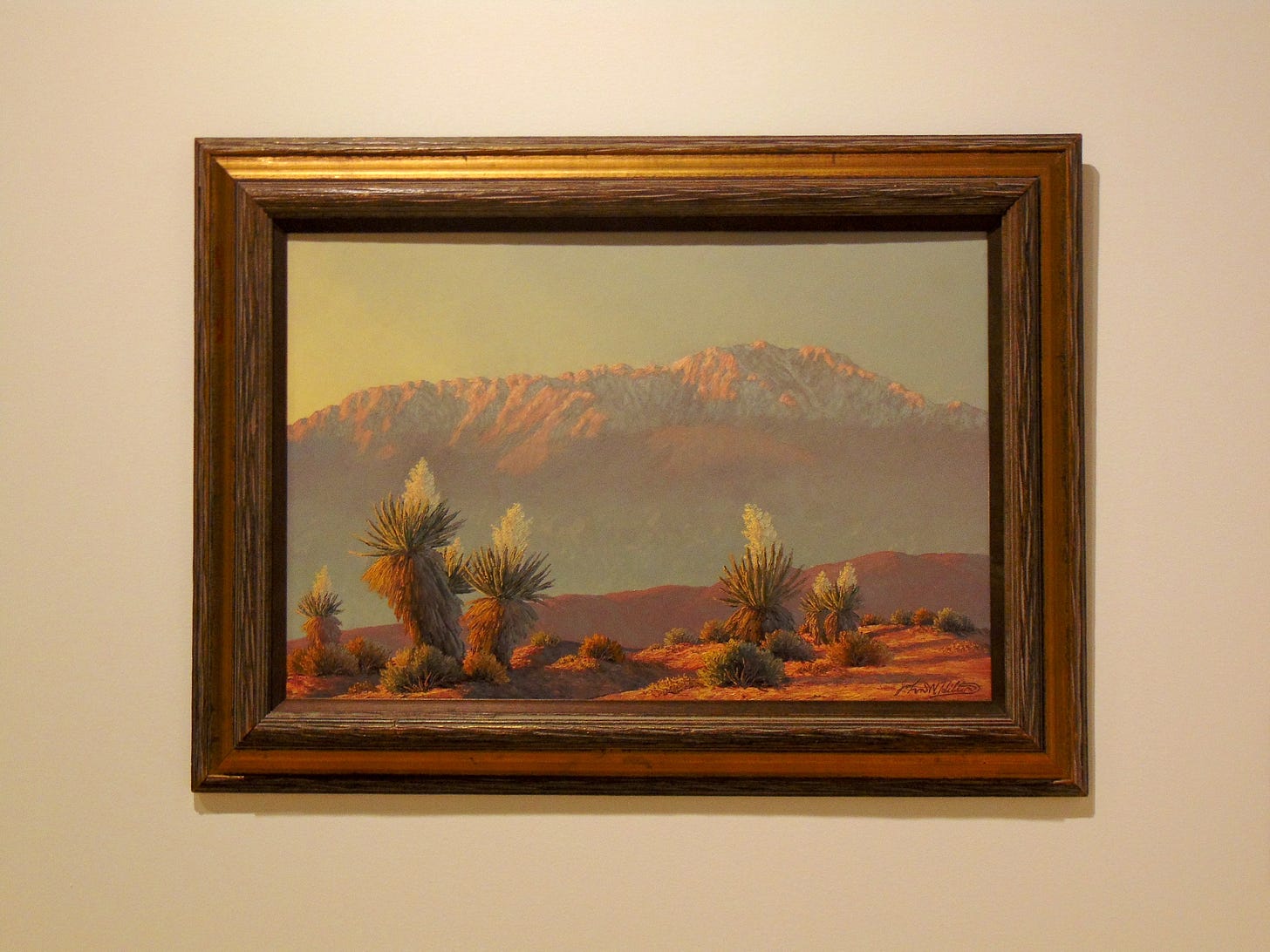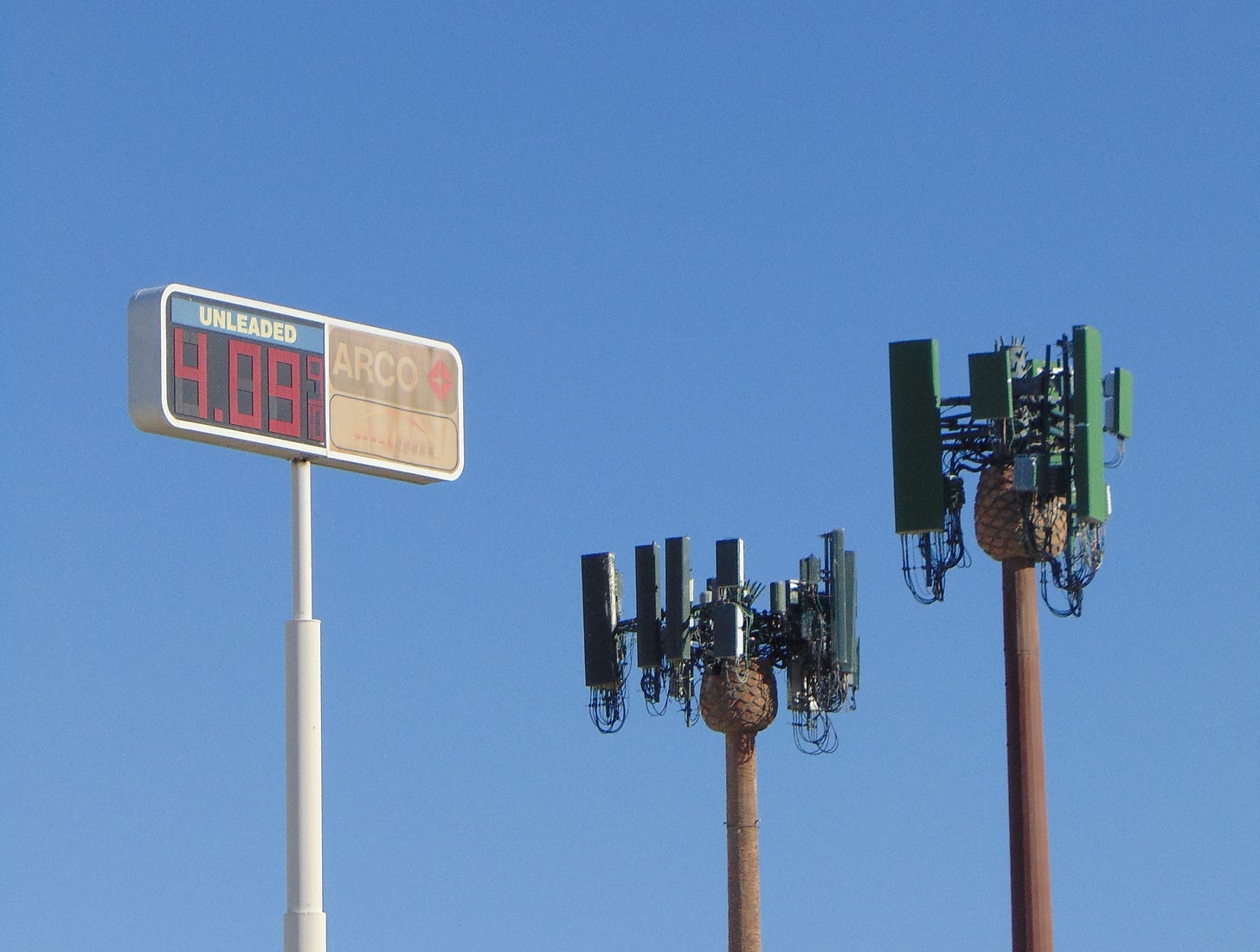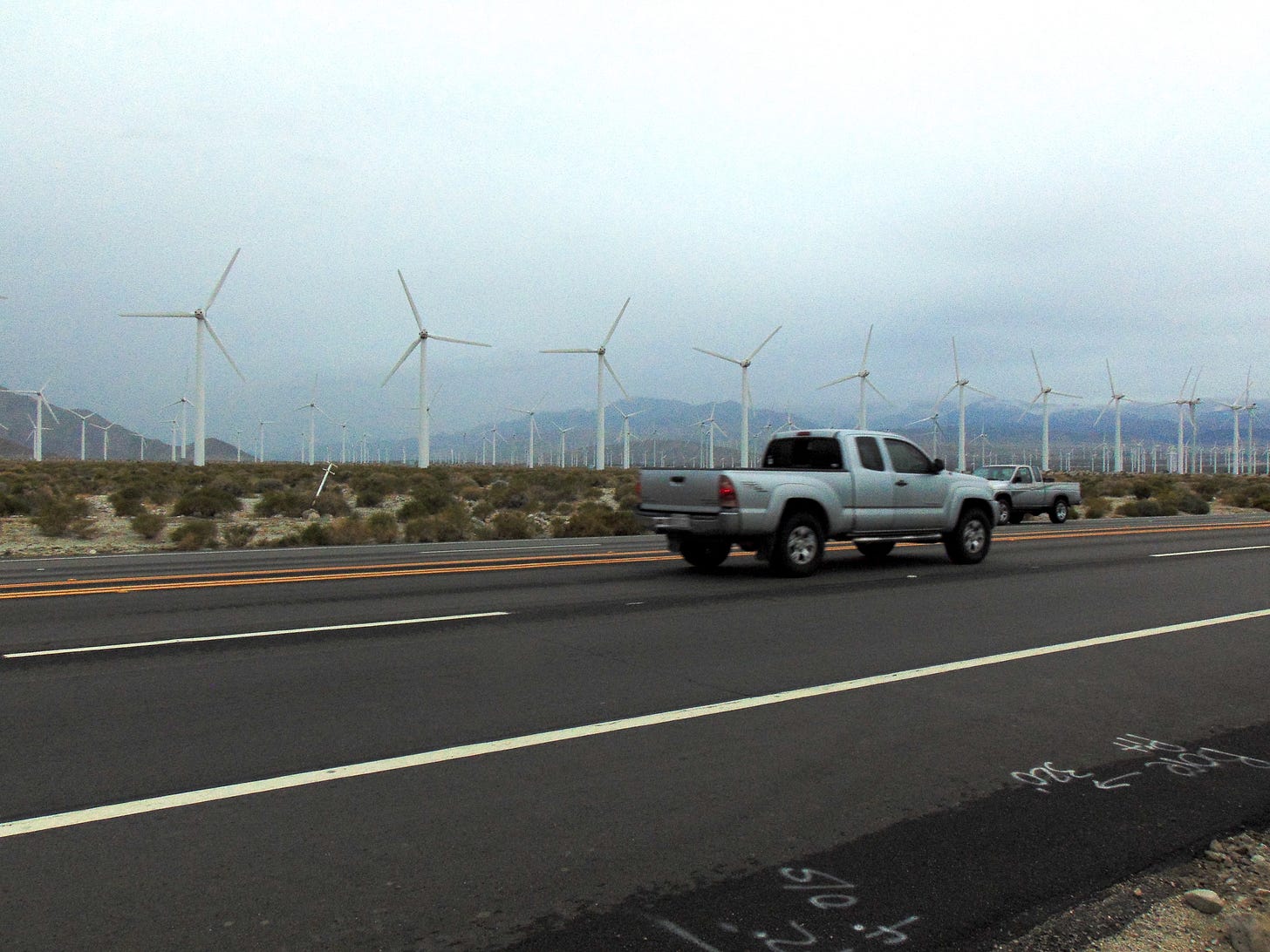On a recent trip to Palm Springs I was admiring the natural flora and fauna and I came across these absolutely delightful cell towers that are “disguised” to look like palm trees. I’m originally from the Northeast, so I’m familiar with the supertall “trees” that are actually cell towers, but I have rarely encountered this desert variety.
If you’re interested in a deeper dive on their history, check out this Vox article. The short version is that as the need for cell service has become more embedded in our daily lives, there has been an expansion of the infrastructure necessary to support it - even in places that we consider too naturally beautiful or historic to contain a big gray metal tower. So now there are entire companies that specialize in camouflaging cell towers, such as Larson Camouflage, which was acquired for ~$20 million in 2019.
I think these are funny because they’re typically not fooling anyone, but a lot of time and effort went into designing and building this fake palm tree. And they are reportedly more costly when they are more realistic - verisimilitude ain’t cheap. But at the end of the day, the impossibility of the task - to be simultaneously a palm tree and a cell tower - is so ridiculous and self defeating that I now find these towers to be endearing in their own right. It’s like… “Dreaming a thought that could dream about a thought / That could think of the dreamer that thought…”
These “trees” are a particularly whimsical example of the ways that architecture has been used to hide unsightly infrastructure from the landscape: Jefferson famously built cabins for his enslaved workers into the side of a hill, so you couldn’t see them from the main house at Monticello. And as we discussed a few weeks ago, historic districts enforce the preservation of the centuries-old character of neighborhoods through the use of particular exterior building styles and materials - even when the homes are filled with modern appliances. And this building in Cambridge that looks like a school is actually filled with Verizon servers.
Aesthetics are also political. Our obsession with hiding infrastructure for aesthetic purposes has also hampered progress on shifting toward greener forms of energy production. For example, Cape Wind cancelled plans for the development of an offshore wind farm five miles south of Cape Cod after over fifteen years of opposition from the likes of William Koch, who claimed the turbines would be “visual pollution”. Similarly, as large solar arrays become more common and are being sited on natural and agricultural land (as opposed to just the California desert) opposition to their deployment is becoming increasingly organized. Even though a natural gas plant is far worse for the environment than a wind turbine or solar array, the fact that it can be placed out of sight and out of mind makes it much easier to build and operate.
As we continue to transition to clean energy, much of it will be at utility scale - this means that this infrastructure will become more ubiquitous and at higher risk of becoming unsightly. Much like with cell phone towers, this raises an aesthetic question. I wonder about the ways we will apply the same camouflage techniques to this infrastructure as it proliferates. Or whether camouflage is out of aesthetic fashion altogether. Potentially, like the telephone wires in most American towns, we will just get used to it. For what it’s worth, Palm Springs has plenty of wind turbines, and none of them are hidden.
Bennett
City Speak #44







